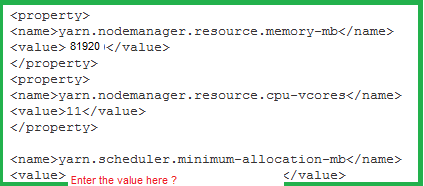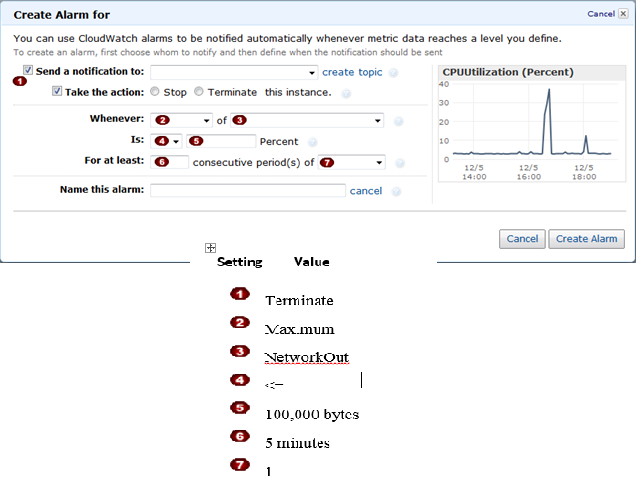AWS Certified SysOps Administrator - Associate Questions and Answers (Dumps and Practice Questions)
Question : A user has configured ELB with Auto Scaling. The user suspended the Auto Scaling terminate process only for a while. What will happen to the
availability zone rebalancing process AZRebalance. during this period?

1. Auto Scaling will not launch or terminate any instances
2. Auto Scaling will allow the instances to grow more than the maximum size
3. Access Mostly Uused Products by 50000+ Subscribers
4. It is not possible to suspend the terminate process while keeping the launch active
Correct Answer : Get Lastest Questions and Answer :
Exp: Auto Scaling performs various processes, such as Launch, Terminate, Availability Zone Rebalance
AZRebalance. etc. The AZRebalance process type seeks to maintain a balanced number of instances across Availability Zones within a region. If
the user suspends the Terminate process, the AZRebalance process can cause the Auto Scaling group to grow up to ten percent larger than the
maximum size. This is because Auto Scaling allows groups to temporarily grow larger than the maximum size during rebalancing activities. If Auto
Scaling cannot terminate instances, the Auto Scaling group could remain up to ten percent larger than the maximum size until the user resumes
the Terminate process type.
Question : A user has created a mobile application which makes calls to DynamoDB to fetch certain data. The application is using the DynamoDB SDK and
root account access/secret access key to connect to DynamoDB from mobile. Which of the below mentioned statements is true with respect to the
best practice for security in this scenario?

1. The user should create a separate IAM user for each mobile application and provide DynamoDB access with it
2. The user should create an IAM role with DynamoDB and EC2 access. Attach the role with EC2 and route all calls from the mobile through EC2
3. Access Mostly Uused Products by 50000+ Subscribers
4. Create an IAM Role with DynamoDB access and attach it with the mobile application
Correct Answer : Get Lastest Questions and Answer :
Exp : With AWS IAM a user is creating an application which runs on an EC2 instance and makes requests to AWS, such as DynamoDB or S3 calls.
Here it is recommended that the user should not create an IAM user and pass the user's credentials to the application or embed those credentials
inside the application. If the user is creating an app that runs on a mobile phone and makes requests to AWS, the user should not create an
IAMuser and distribute the user's access key with the app. Instead, he should use an identity provider, such as Login with Amazon, Facebook, or
Google to authenticate the users, and then use that identity to get temporary security credentials.
Question : A user is configuring the Multi AZ feature of an RDS DB. The user came to know that this RDS DB does not use the AWS technology, but uses
server mirroring to achieve HA. Which DB is the user using right now?

1. My SQL
2. Oracle
3. Access Mostly Uused Products by 50000+ Subscribers
4. PostgreSQL
Correct Answer : Get Lastest Questions and Answer :
Explanation: Amazon RDS provides high availability and failover support for DB instances using Multi AZ deployments. In a Multi AZ deployment, Amazon RDS
automatically provisions and maintains a synchronous standby replica in a different Availability Zone. Multi AZ deployments for Oracle,
PostgreSQL, and MySQL DB instances use Amazon technology, while SQL Server MS SQL. DB instances use SQL Server Mirroring.
Related Questions
Question : An organization has configured the custom metric upload with CloudWatch. The organization has given permission to its employees to upload
data using CLI as well SDK. How can the user track the calls made to CloudWatch?

1. The user can enable logging with CloudWatch which logs all the activities
2. Use CloudTrail to monitor the API calls
3. Access Mostly Uused Products by 50000+ Subscribers
4. Enable detailed monitoring with CloudWatch
Ans : 2
Exp :AWS CloudTrail is a web service which will allow the user to monitor the calls made to the Amazon CloudWatch API for the organization's account,
including calls made by the AWS Management Console, Command Line Interface (CLI., and other services. When CloudTrail logging is turned on,
CloudWatch will write log files into the Amazon S3 bucket, which is specified during the CloudTrail configuration.
Question : A user has created a queue named "myqueue" with SQS. There are four messages published to queue which are not received by the consumer
yet. If the user tries to delete the queue, what will happen?

1. A user can never delete a queue manually. AWS deletes it after 30 days of inactivity on queue
2. It will delete the queue
3. Access Mostly Uused Products by 50000+ Subscribers
4. I t will ask user to delete the messages first
Ans : 2
Exp : SQS allows the user to move data between distributed components of applications so they can perform different tasks without losing messages or
requiring each component to be always available. The user can delete a queue at any time, whether it is empty or not. It is important to note that
queues retain messages for a set period of time. By default, a queue retains messages for four days.
Question : A user has launched a large EBS backed EC instance in the US-East-a region. The user wants to achieve Disaster Recovery (DR. for that
instance by creating another small instance in Europe.
How can the user achieve DR?

1. Copy the running instance using the "Instance Copy" command to the EU region
2. Create an AMI of the instance and copy the AMI to the EU region. Then launch the instance from the EU AMI
3. Access Mostly Uused Products by 50000+ Subscribers
4. Use the "Launch more like this" option to copy the instance from one region to another
Ans : 2
Exp :
To launch an EC2 instance it is required to have an AMI in that region. If the AMI is not available in that region, then create a new AMI or use the
copy command to copy the AMI from one region to the other region.
Question : A user has created numerous EBS volumes. What is the general limit for each AWS account for the maximum number of EBS volumes that can
be created?

1. 10000
2. 5000
3. Access Mostly Uused Products by 50000+ Subscribers
4. 1000
Ans : 2
Exp : A user can attach multiple EBS volumes to the same instance within the limits specified by his AWS account. Each AWS account has a limit on
the number of Amazon EBS volumes that the user can create, and the total storage available. The default limit for the maximum number of
volumes that can be created is 5000.
Question : A user has created a VPC with CIDR .../ using the wizard. The user has created a public subnet CIDR (.../. and VPN only
subnets CIDR (20.0.1.0/24. along with the VPN gateway (vgw-12345. to connect to the user's data centre. Which of the below mentioned options
is a valid entry for the main route table in this scenario?

1. Destination: 20.0.0.0/24 and Target: vgw-12345
2. Destination: 20.0.0.0/16 and Target: ALL
3. Access Mostly Uused Products by 50000+ Subscribers
4. Destination: 0.0.0.0/0 and Target: vgw-12345
Ans : 4
Exp : The user can create subnets as per the requirement within a VPC. If the user wants to connect VPC from his own data centre, he can setup a
public and VPN only subnet which uses hardware VPN access to connect with his data centre. When the user has configured this setup with
Wizard, it will create a virtual private gateway to route all traffic of the VPN subnet. Here are the valid entries for the main route table in this
scenario: Destination: 0.0.0.0/0 & Target: vgw-12345 (To route all internet traffic to the VPN gateway.
Destination: 20.0.0.0/16 & Target: local (To allow local routing in VPC.
Question :
What happens to an attached Elastic IP Address when the instance is stopped?

1. It stays attached to the instance.
2. It becomes unattached until the instance is restarted.
3. Access Mostly Uused Products by 50000+ Subscribers
4. It is disassociated from the account.
Question :
Your Database engine needs to build indexes. You configure a read replica from the current production system
and start the index building on the read replicas. What do you need to do once the indexes are complete?

1. Change the DNS to the read replica
2. Request AWS to change endpoint to read replica
3. Access Mostly Uused Products by 50000+ Subscribers
4. None of the above
Question :
Which storage engine is required for MySQL read replicas?

1. InnoDB
2. MyISAM
3. Access Mostly Uused Products by 50000+ Subscribers
4. Federated
Question :
What would you need to edit to allow connections from your remove IP to your database instance?

1. VPC Network
2. Options Group
3. Access Mostly Uused Products by 50000+ Subscribers
4. Security Group
Question :
RDS allows you to restore a database engine to a "point in time" (InnoDB for MySQL).

1. True
2. False
Question : In the Amazon Elastic Compute Cloud (Amazon EC) console
you have setup the Alarm as given setting, what would it implies

1. Create an alarm that terminates an instance that runs BigData MapReduce when it is no longer sending results data.
2. Create an alarm that stop an instance that runs BigData MapReduce when it is no longer sending results data.
3. Access Mostly Uused Products by 50000+ Subscribers